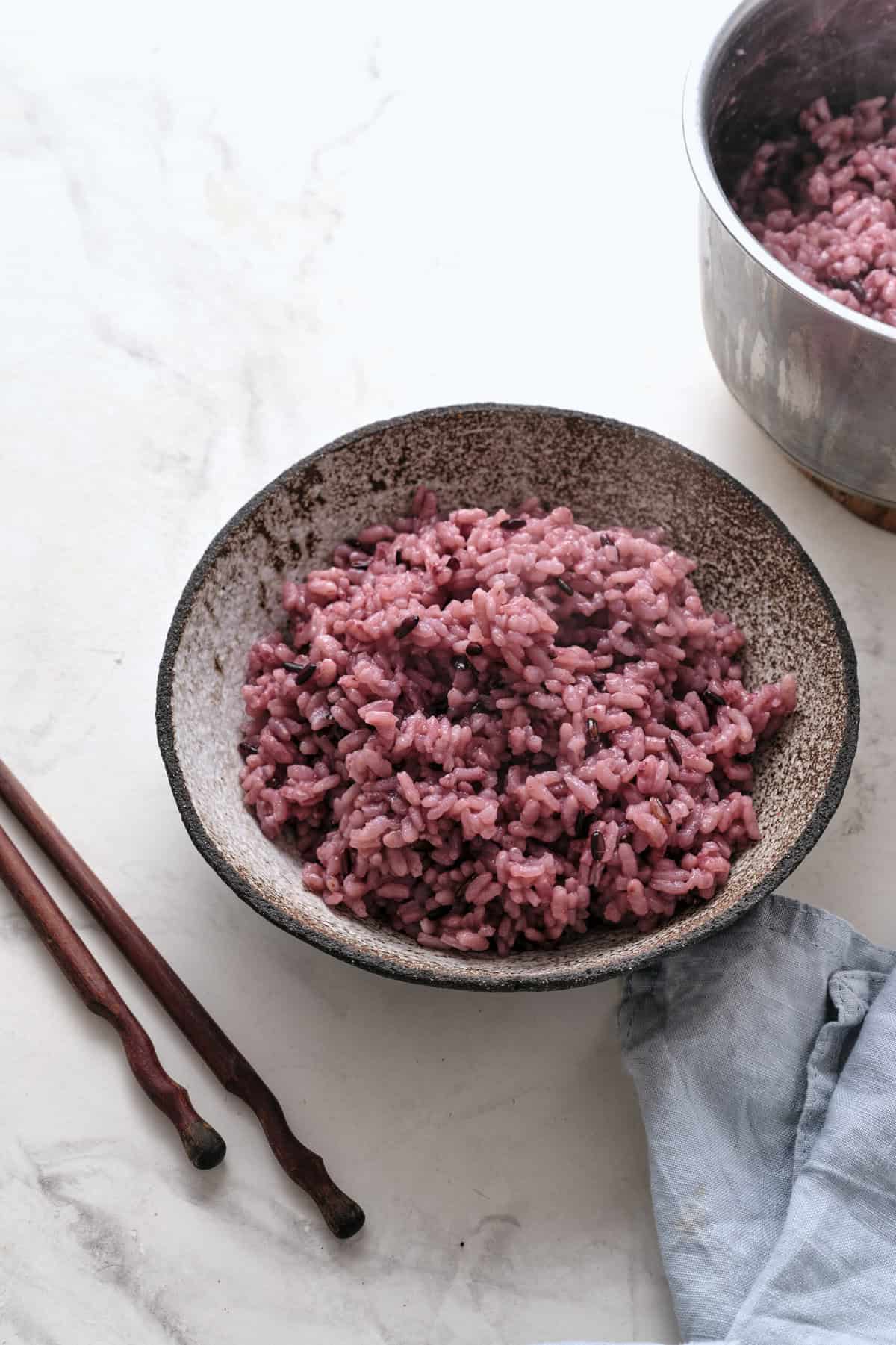One bowl of this magnificently colored rice will have you eating like an emperor.
Table of Contents
Is Purple Rice Healthy?Why Is It Called “Forbidden Rice”?FAQs & TipsServing SuggestionsPurple Rice
Over the winter, I went on an adventure to find the most purple foods, and you’d be surprised by how many are out there! While there are naturally hued foods, such as eggplant or purple sweet potatoes, purple rice only develops its deep shade once fully cooked. This dish is fluffy and easy to prepare, making it a satisfying side for almost any occasion. It’s colorful, classy, and completely customizable when it comes to seasonings.
The first time I made this dish, it was actually by accident! Upon my mother’s recommendation, I was trying black rice for the first time, and wanted to add white rice as well. As it turns out, this dish isn’t just a result of mixing rice types—it’s a thoughtfully crafted masterpiece that dates back to imperial China in 2500 BC when black rice was reserved for the aristocracy. Also called “forbidden rice,” this dish might look intimidatingly fancy, but it only uses four simple ingredients.
In just 30 minutes, you’ll have a pot of steamy, salty rice that pairs perfectly with both meat-lovers’ and vegetarian meals. That—plus the fact it’s quite affordable to make—is the reason why it’s a go-to in my personal cookbook.
Is Purple Rice Healthy?
While purple rice isn’t the most nutrient-dense dish, it can be part of a healthy diet. It’s got a small amount of protein, potassium, and calcium. Luckily for many people, purple rice is vegan and can be gluten-free, provided the rice you purchase is labeled as such. But since rice contains high amounts of carbohydrates, this wouldn’t be a keto-friendly option.
Why Is It Called “Forbidden Rice”?
Some say purple is a king’s color, and this dish’s history exemplifies that fully. Rumor has it that in Imperial China, black rice was reserved exclusively for the emperor and other elites. The unique hue, palatable taste, and rarity of black rice meant it was reserved for the most wealthy and powerful people in the country. The purplish stain comes from a pigment in black rice called anthocyanin—the same one that is found in blueberries, beets, and red cabbage.
FAQs & Tips
Once cooled, purple rice can be refrigerated in an airtight container for 3-4 days. Alternatively, place it in a freezer-safe container and freeze for up to 1 month. If you go this route, make sure to thaw it in the fridge overnight before reheating the next day. When you’re ready to enjoy it, warm it up in a pot on the stove with a splash of water or broth. Heat it at medium temperature until it starts to steam, stirring occasionally to ensure thorough cooking.
Black rice comes from a group of rice plants with dark, pigmented grains. Meanwhile, purple rice is a dish made from cooking black rice with white rice, which leads to the pigment from the black rice coloring the whole dish purple.
Thus, purple rice is a result of black rice, not the exact same food.
While this basic recipe can be salted to your liking, I also suggest melting a pat of butter or scoop of coconut oil into it. Mix it in, and then add more seasonings if you’d like. Since purple rice has a uniquely earthy taste, try incorporating a complementary herb, such as rosemary or thyme. Or spice it up with one teaspoon of cumin or paprika.
Serving Suggestions
On its own, purple rice can dazzle like a bowl of amethyst beads. But the meal gets even more lavish when you dish out Honey Sriracha Chicken, Instant Pot Beef and Broccoli, or Asian Turkey Meatballs. On the other hand, you could choose from some of my favorite vegetarian mains, such as Stuffed Mushrooms, Vegetable Egg Foo Young, or Strawberry Walnut Salad. As you can see, purple rice goes great with a wide range of spicy, sweet, and savory dishes. It’s so versatile!
Purple Rice
Ingredients
Instructions
Nutrition
The post Purple Rice appeared first on Food Faith Fitness.






























